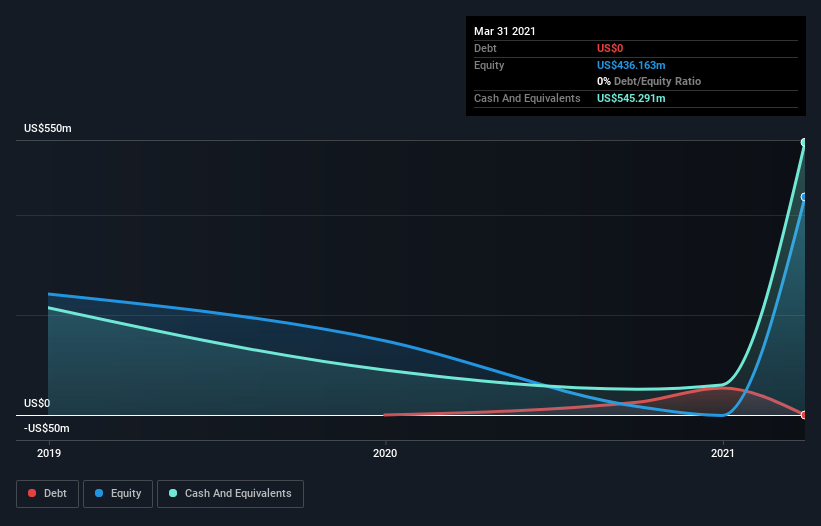Here's Why We're Not At All Concerned With Butterfly Network's (NYSE:BFLY) Cash Burn Situation
Just because a business does not make any money, does not mean that the stock will go down. For example, although Amazon.com made losses for many years after listing, if you had bought and held the shares since 1999, you would have made a fortune. But while the successes are well known, investors should not ignore the very many unprofitable companies that simply burn through all their cash and collapse.
So, the natural question for Butterfly Network (NYSE:BFLY) shareholders is whether they should be concerned by its rate of cash burn. In this report, we will consider the company's annual negative free cash flow, henceforth referring to it as the 'cash burn'. First, we'll determine its cash runway by comparing its cash burn with its cash reserves.
Check out our latest analysis for Butterfly Network
When Might Butterfly Network Run Out Of Money?
A cash runway is defined as the length of time it would take a company to run out of money if it kept spending at its current rate of cash burn. When Butterfly Network last reported its balance sheet in March 2021, it had zero debt and cash worth US$545m. Importantly, its cash burn was US$88m over the trailing twelve months. That means it had a cash runway of about 6.2 years as of March 2021. Even though this is but one measure of the company's cash burn, the thought of such a long cash runway warms our bellies in a comforting way. The image below shows how its cash balance has been changing over the last few years.
How Well Is Butterfly Network Growing?
It was fairly positive to see that Butterfly Network reduced its cash burn by 22% during the last year. Having said that, the revenue growth of 81% was considerably more inspiring. It seems to be growing nicely. Of course, we've only taken a quick look at the stock's growth metrics, here. You can take a look at how Butterfly Network is growing revenue over time by checking this visualization of past revenue growth.
Can Butterfly Network Raise More Cash Easily?
While Butterfly Network seems to be in a decent position, we reckon it is still worth thinking about how easily it could raise more cash, if that proved desirable. Companies can raise capital through either debt or equity. Many companies end up issuing new shares to fund future growth. By comparing a company's annual cash burn to its total market capitalisation, we can estimate roughly how many shares it would have to issue in order to run the company for another year (at the same burn rate).
Butterfly Network's cash burn of US$88m is about 4.7% of its US$1.9b market capitalisation. Given that is a rather small percentage, it would probably be really easy for the company to fund another year's growth by issuing some new shares to investors, or even by taking out a loan.
How Risky Is Butterfly Network's Cash Burn Situation?
As you can probably tell by now, we're not too worried about Butterfly Network's cash burn. In particular, we think its revenue growth stands out as evidence that the company is well on top of its spending. Its cash burn reduction wasn't quite as good, but was still rather encouraging! After taking into account the various metrics mentioned in this report, we're pretty comfortable with how the company is spending its cash, as it seems on track to meet its needs over the medium term. Its important for readers to be cognizant of the risks that can affect the company's operations, and we've picked out 1 warning sign for Butterfly Network that investors should know when investing in the stock.
Of course Butterfly Network may not be the best stock to buy. So you may wish to see this free collection of companies boasting high return on equity, or this list of stocks that insiders are buying.
This article by Simply Wall St is general in nature. It does not constitute a recommendation to buy or sell any stock, and does not take account of your objectives, or your financial situation. We aim to bring you long-term focused analysis driven by fundamental data. Note that our analysis may not factor in the latest price-sensitive company announcements or qualitative material. Simply Wall St has no position in any stocks mentioned.
Have feedback on this article? Concerned about the content? Get in touch with us directly. Alternatively, email editorial-team (at) simplywallst.com.

